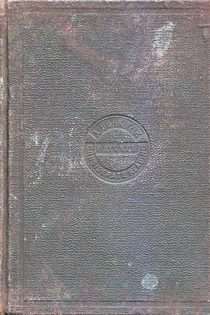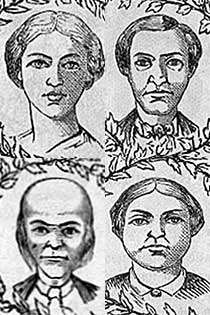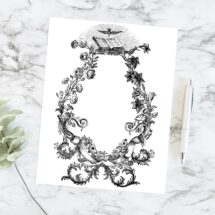This is the second in a five part series on the physiognomical vital and non-vital temperaments and rules for marriage, excerpted from Plain Home Talk by Edward B. Foote, M.D., 1894.
 The bilious temperament is distinguished by a harshly-defined outline of the person and features. The muscular system is dense or firm, and capable of highly active movements. The bony system is comparatively largely developed. The hair is black, coarse, and often curly. The eyes are a dark brown, and the complexion is dark and sallow. The head is of average size, and is developed obliquely, upwardly, and backwardly, so that the occipital and frontal bones are considerably parallel. The forehead, as with the sanguine, recedes, and contracts laterally as it rises. The nose is usually above medium size, and, in strongly-marked representatives, it is aquiline or Roman in form, but sometimes it has the Grecian form; in females, this is its usual form. A large aquiline or Roman nose is a highly masculine feature, and on a woman’s face it is as undesirable as a large beard.
The bilious temperament is distinguished by a harshly-defined outline of the person and features. The muscular system is dense or firm, and capable of highly active movements. The bony system is comparatively largely developed. The hair is black, coarse, and often curly. The eyes are a dark brown, and the complexion is dark and sallow. The head is of average size, and is developed obliquely, upwardly, and backwardly, so that the occipital and frontal bones are considerably parallel. The forehead, as with the sanguine, recedes, and contracts laterally as it rises. The nose is usually above medium size, and, in strongly-marked representatives, it is aquiline or Roman in form, but sometimes it has the Grecian form; in females, this is its usual form. A large aquiline or Roman nose is a highly masculine feature, and on a woman’s face it is as undesirable as a large beard.
“There is a variety of this temperament which hitherto has been regarded as the highest grade of the sanguine temperament. It is distinguished from the preceding by red hair, a florid complexion, and generally, lightly-grayish blue eyes. This variety is thus produced: progenitors of the dark variety, by emigrating from a warm to a colder climate, have their constitutions so modified that the children born to them after their emigration, will have red hair, a florid complexion, etc. Dr. Pritchard, the ethnologist, informs us that the progeny of those dark-complexioned Jews, who emigrated from Palestine to Northern Germany, became distinguished for their florid complexions and bushy red beards. I have observed several instances of dark, bilious parents, who, by emigrating from Louisiana to Ohio and Pennsylvania, had afterward children with red hair and a florid complexion. This change in the human constitution, resulting from a change of climate, appears to be similar to that which is effected in birds of a dark plumage by the climate of Siberia. If one of our wild turkeys were taken to Siberia, he would, in the winter, become white; but I suspect that he would still be a turkey; and so I regard as bilious, the florid children of dark, bilious parents. This change appears to be confined to the dermal system, and has for its object the adaptation of the animal to the climate. Between the dark and florid varieties of this constitution I have perceived no difference, either mentally, therapeutically, or matrimonially. In all instances in which one would render the marriage compatible, so would the other. I denominate this florid condition the Xanthous, or, by contraction, the Xantho-bilious. As illustrations of the dark bilious, I may cite Gustavus Adolphus, king of Sweden, a good king and an able general; Francis I., king of France; Pizarro, conqueror of Peru. And of the Xantho-bilious, Alexander the Great, and Ex-President Thomas Jefferson.”

















You must be logged in to post a comment.